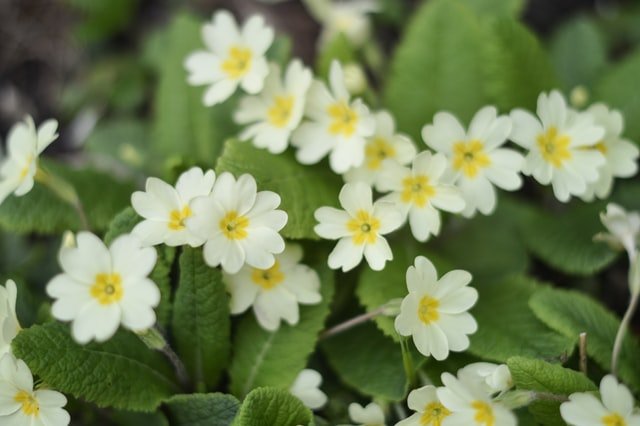
The primrose (Primula veris or officinalis) is a plant of the Primulaceae family. Known for its analgesic, anti-inflammatory and antirheumatic properties, it is useful against insomnia and headaches. Let’s find out better.
Ownership of the primrose
The flowers of the primrose are very rich in triterpene saponins (5-10%); the most important is primulin, and as an infusion they are effective remedies in the treatment of insomnia and headache.
The roots of the plant contain two phenolic heterosides derived from salicylic acid, primrose and primulaverine, which are transformed by hydrolysis into derivatives of salicylic acid, whose analgesic, anti- inflammatory and antirheumatic virtues are well known: in fact, they are the same virtues that characterize aspirin.
Its intake is indicated to relieve rheumatic pains and in the treatment of gout, caused by the presence of uric acids, to relieve edema or swelling in the extremities, and to make hematomas reabsorb.
Furthermore, the primrose has expectorant and mucolytic properties, in the form of a decoction, it is used in the treatment of coughs, colds, bronchitis and bronchial asthma.
How to use
DECOCT : 1 level tablespoon of burdock root, 1 cup of water
Pour the chopped root into cold water, turn on the heat and bring to a boil. Boil for a few minutes and turn off the heat. Cover and leave to infuse for 10 min. Filter the infusion and drink it on a full stomach against cough, cold and joint pain.
Contraindications of the primrose
There are no contraindications for the use of primrose except in the case of an established allergy to one or more components.
Description of the plant
Biennial herbaceous plant, stubby, often cultivated as an annual with abundant light green, broad, obovate or spatulate leaves, which form a dense basal tuft, may have crenate, lobed, whole lamina and toothed margins depending on the species taken into consideration.
The flowers gathered in dense globose groups at the top of the erect stems variously colored that appear united in umbrella, spike or whorls of various numbers, sometimes superimposed.
The fruit is a unilocular capsule, oblong and dehiscent at the top for 5-10 teeth. It is enclosed by the chalice which is persistent. The interior contains numerous flattened brownish seeds that ripen between July and August.
The habitat of the primrose
It grows on dry meadows and woods; it prefers calcareous soils and low nutritional values of the soil which must be moderately humid.
Background

The name derives from an ancient Italian phrase which means “spring flower” and even earlier it could derive from the Latin primus. At the beginning of the Renaissance this term indifferently indicated any flower that bloomed as soon as winter ended, for example this was the way to indicate the spring daisies (Bellis perennis – Daisy). Later, however, the meaning narrowed as the specific name of this plant.
In scientific literature one of the first botanists to use the name of “Primula” for these flowers was PA Mattioli (1500 – 1577), physician and botanist from Siena, famous among other things for having done studies on Dioscorides and for having written a of the first modern botanical works.
Name confirmed in the seventeenth century also by the French botanist Joseph Pitton de Tournefort (5 June 1656 – 28 December 1708) to whom the foundation of this genus is usually attributed. For the specific name veris the etymology is very uncertain, some texts translate it more or less with true spring.






